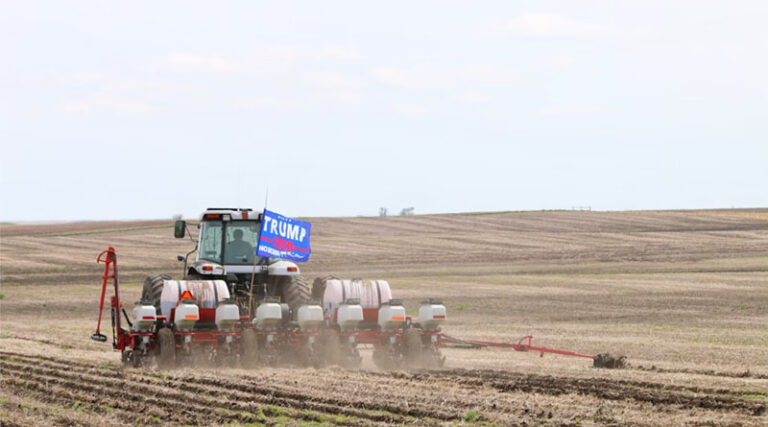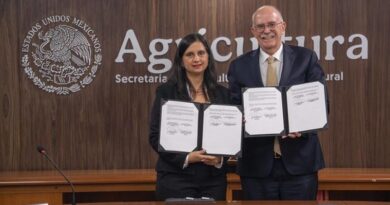
Trump’s Tariffs Against Brazil Are Illegal, but Remain in Effect Until Final Ruling in the US
Interview with Leonardo Munhoz, researcher and professor at FGV Agro and FGV Bioeconomia, with a master’s degree in business law from FGV and a master’s and doctorate in environmental law from Elisabeth Haub School of Law – Pace University, explains the situation.
02 October 2025, New Delhi: The 50% tariffs imposed by the Trump administration on Brazilian products have been declared illegal by two US federal courts, yet they remain in force for many importers due to procedural limitations and ongoing appeals. While the rulings confirm that the president lacked authority under the International Emergency Economic Powers Act (IEEPA) to impose such sweeping measures, the uncertainty continues to disrupt Brazil-US trade, particularly for key agricultural exports like beef, chicken, orange juice, and cellulose.

Are the US tariffs illegal?
Yes. Both the Court of International Trade (CIT) and the Federal Circuit have already declared that the 50% tariffs imposed by the Trump administration are illegal. The central argument was that the International Emergency Economic Powers Act (IEEPA) does not grant the president the power to create tariffs with global and permanent reach.
Congress has always required explicit authorization when delegating tariff powers, and Supreme Court jurisprudence (Major Questions Doctrine) reinforces that measures with significant economic impact can only be authorized by clear law.
What was the basis for the US government imposing these tariffs?
Trump justified the tariffs with political and environmental arguments. On the political side, he cited Bolsonaro’s trial in the Supreme Court and internet regulation in Brazil. On the environmental side, he claimed that Brazil was allowing illegal forestry practices that would harm the competitiveness of US farmers.
In the Mississippi Senate, Brazil was accused of manipulating timber and agricultural markets. In practice, the environmental discourse served as a protectionist tool, ignoring the fact that Brazil already has one of the strictest forestry laws in the world, with mandatory preservation obligations (APPs and Legal Reserves) that go far beyond the voluntary rules in the US system.
Why are the tariffs still in effect?
Although the illegality has been recognized, the effects of the decisions are still limited. The CIT initially granted a universal injunction (canceling tariffs for everyone), but the Federal Circuit revoked this scope, restricting the benefits only to the parties to the case.
As a result, importers who filed suit are already entitled to a refund of the amounts paid, but others (including those who purchase Brazilian products) remain subject to tariffs until a new decision is made. Additionally, the US government can appeal to the Supreme Court until November 2025, which prolongs the uncertainty.
“…Brazil has remained cautious, avoiding immediate retaliation, awaiting a clearer definition from the US courts.”
Which Brazilian products are most affected?
The tariffs have impacted a wide range of exports, including agribusiness products such as soybeans, meat, coffee, and wood, as well as industrialized goods. The strongest effects are felt in sectors where Brazil is highly competitive and deeply integrated into the US market—beef and chicken, cellulose, orange juice, wood, and furniture. These industries face both a loss of competitiveness and legal instability, complicating long-term contracts.
After almost two months of high tariffs, what has changed in Brazil-US trade?
Bilateral trade has seen a decline in Brazilian exports, with cargo increasingly redirected to alternative markets. American importers now face higher costs and contractual uncertainty, particularly in supply chains dependent on Brazilian agricultural and forestry commodities.
Logistics and trading companies have adopted defensive strategies, such as filing their own lawsuits to suspend the application of tariffs. On the diplomatic front, Brazil has chosen caution, avoiding immediate retaliation while waiting for clearer direction from US courts.
What are the possible scenarios for the coming months?
Three main scenarios are emerging:
- Immediate retaliation – Brazil could impose retaliatory tariffs under WTO rules. However, if the Supreme Court ultimately confirms the illegality of the tariffs, such measures could provoke unnecessary diplomatic friction.
- Await final decision – A more cautious approach would be to wait for the CIT to define the scope of its decision and for the Supreme Court to deliver its ruling. If the CIT applies the Uniformity Clause of the US Constitution, which requires tax uniformity, importers of Brazilian goods could automatically benefit.
- Own lawsuits in the US – If the CIT limits the benefits only to the original plaintiffs, Brazilian companies or importers may file their own lawsuits. Given the strong precedent, such cases would almost certainly result in cancellation of tariffs and refund of amounts paid.
The expectation is that the Supreme Court will maintain its restrictive stance and confirm that the president cannot use the IEEPA to impose tariffs with global reach. If so, the tariffs could be definitively eliminated in 2026.
The 50% tariffs against Brazil have already been declared illegal by two US federal courts but continue to affect many importers due to procedural limitations and the pending possibility of a Supreme Court appeal. In the meantime, Brazil’s agribusiness and industrial sectors face a loss of competitiveness and growing uncertainty. The most pragmatic path forward appears to be awaiting the next court decisions while companies prepare to defend their interests through legal channels in the US.
Source: AgriBrasilis
Also Read: UPL Raises Mancozeb Prices in China Again Amid Supply and Cost Pressures
📢 If You’re in Agriculture, Make Sure the Right People Hear Your Story.
From product launches to strategic announcements, Global Agriculture offers unmatched visibility across international agri-business markets. Connect with us at pr@global-agriculture.com to explore editorial and advertising opportunities that reach the right audience, worldwide.






